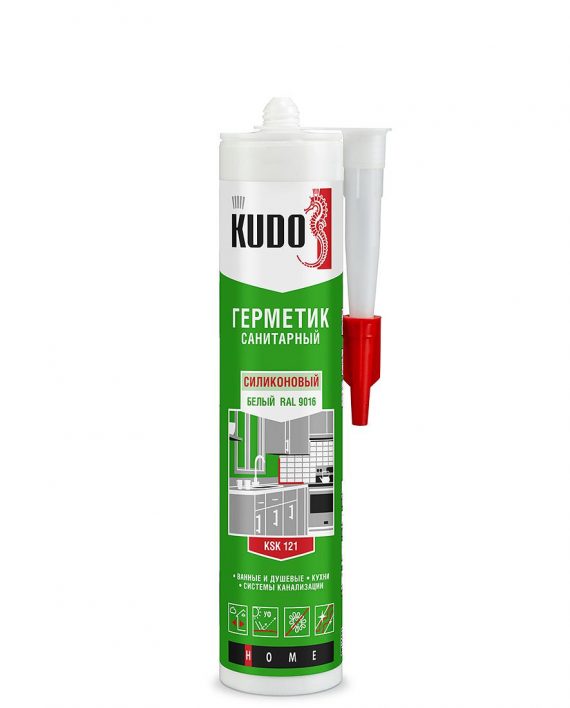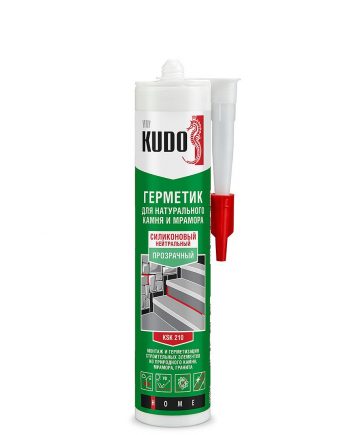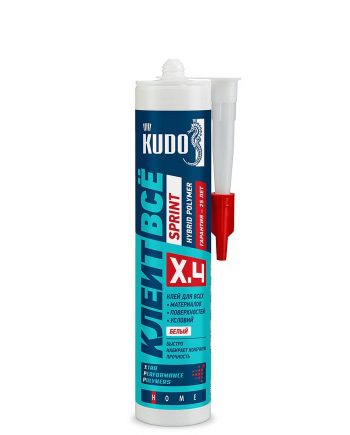Sanitary silicone sealant
SKU: KSK-12X


High-quality Silicone Sealant with acetoxy curing system is intended for household, renovation and construction projects. Contains special antiseptic additives to prevent mould and fungoid growth. Ideal for rooms with high humidity, such as bathrooms, showers, kitchens, etc. It is used for sealing joints around bathtubs, sinks and swimming pools; for sealing joints when installing sanitary equipment, waterproofing surfaces, sealing joints between tiles. KUDO® Sanitary Silicone Sealant is ideal for sealing joints in the bathroom.
Has high operating characteristics: forms a strong durable joint; after curing it retains its deformation flexibility of up to ±25%; does not accumulate dust; it is resistant to most detergents and cleaning agents, UV radiation, atmosphere and temperature changes and almost all aggressive agents. Fast coated with a film. Thixotropic, does not flow or drip down the joint.
Benefit
- Prevents the formation of mold.
- Resistant to UV radiation, cleaning agents and detergents.
- Excellent adhesion to enameled surfaces, glass, stainless steel, anodized aluminum, wood, PVC, porcelain, and other building materials.
- Has a wide operating temperature range: from –40°C to +180°C.
- Skin Time – 10-20 minutes, sealant curing rate – 2 mm per day (at +23°C and 50% relative humidity).
- A cartridge covers 20-22 line meters of a seam with a diameter of 4 mm.
Technical Information
| Colors | Transparent KSK-120, White KSK-121, Graphite black RAL 9011 | KSK-122, Signal grey RAL 7004 | KSK-123, Anthracite grey RAL 7016 | KSK-124, White aluminium RAL 9006 | KSK-125 |
|---|---|
| Adhesive/Sealant base | Silicone |
| Type | Sealants |
| Content | 280 ml |
| Storage | Store in tightly closed original packaging at temperatures from +5°C to +25°C in a dry place. During transportation, freezing down to -20°C is allowed for a total duration of not more than 30 days. |
| Shelf life | 2 years |
How to use
- It is advisable to conduct work at temperatures from +5˚C to +40˚C; the sealant temperature must be +20°C… +25°C.
- Apply the sealant to clean, dry and degreased surfaces.
- To do the work neatly, protect adjacent surfaces with masking tape.
- Cut the tip from the cartridge above the screw thread, screw the dispensing nozzle onto the cartridge, unscrew the nozzle cap and trim the nozzle diagonally (at an angle of 45°) to fit the width of the joint.
- Use a cartridge-operated gun for application.
- Smooth down the sealant in the joint with a wet putty knife. Remove the masking tape immediately after the smoothing.
- Remove excess sealant from tools and surfaces using a solvent (acetone, or white spirit) before the sealant has hardened.
- Remove cured sealant using mechanical methods.
It is not recommended to use the sealant when dealing with natural stone (marble or granite), metal surfaces prone to corrosion (lead, copper, zinc, or brass), or concrete, cement, plastered surfaces, as well as when working with mirrors. Do not use for sealing aquariums and underwater joints. Do not paint over!!!









No questions about this product yet...